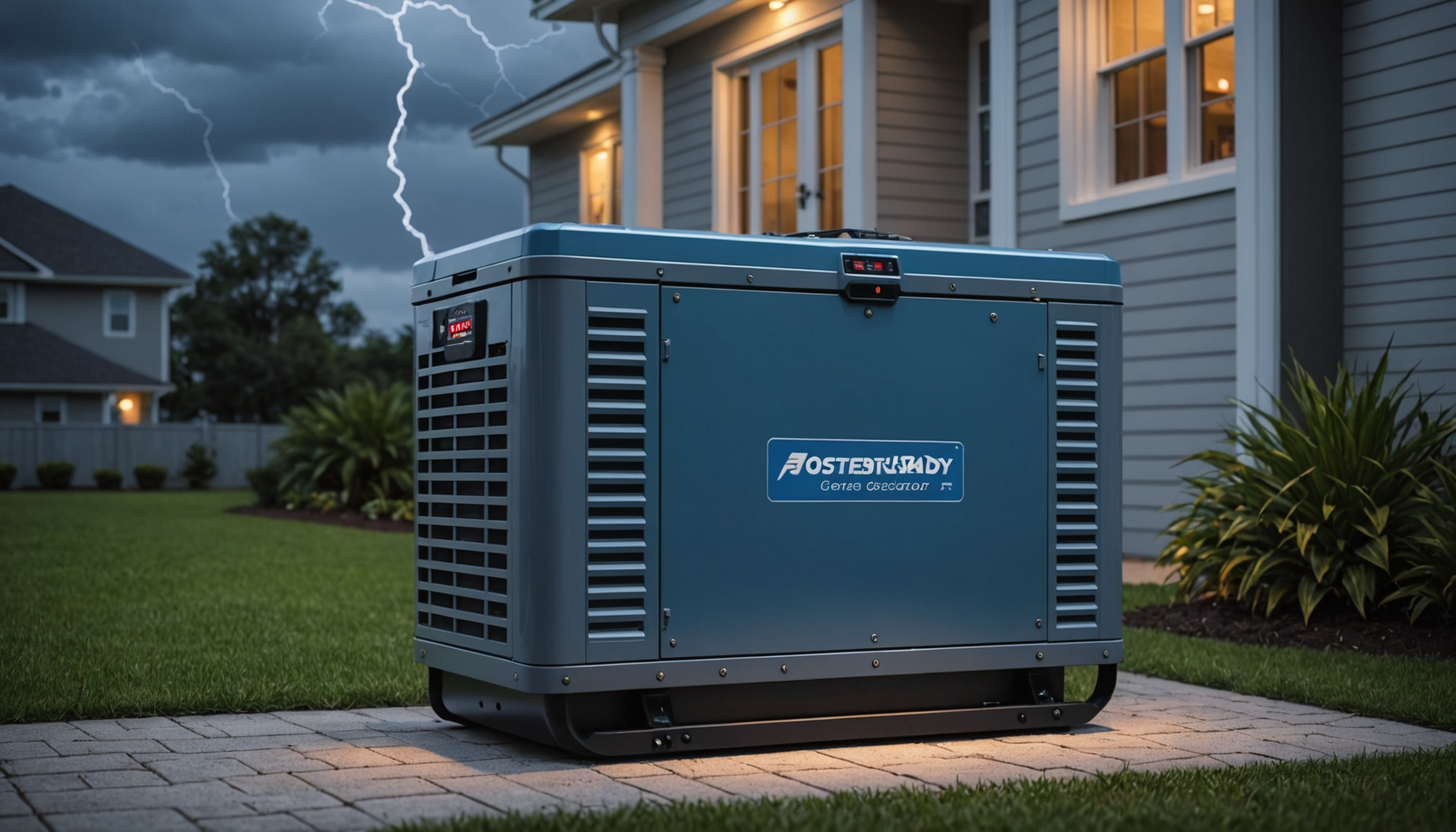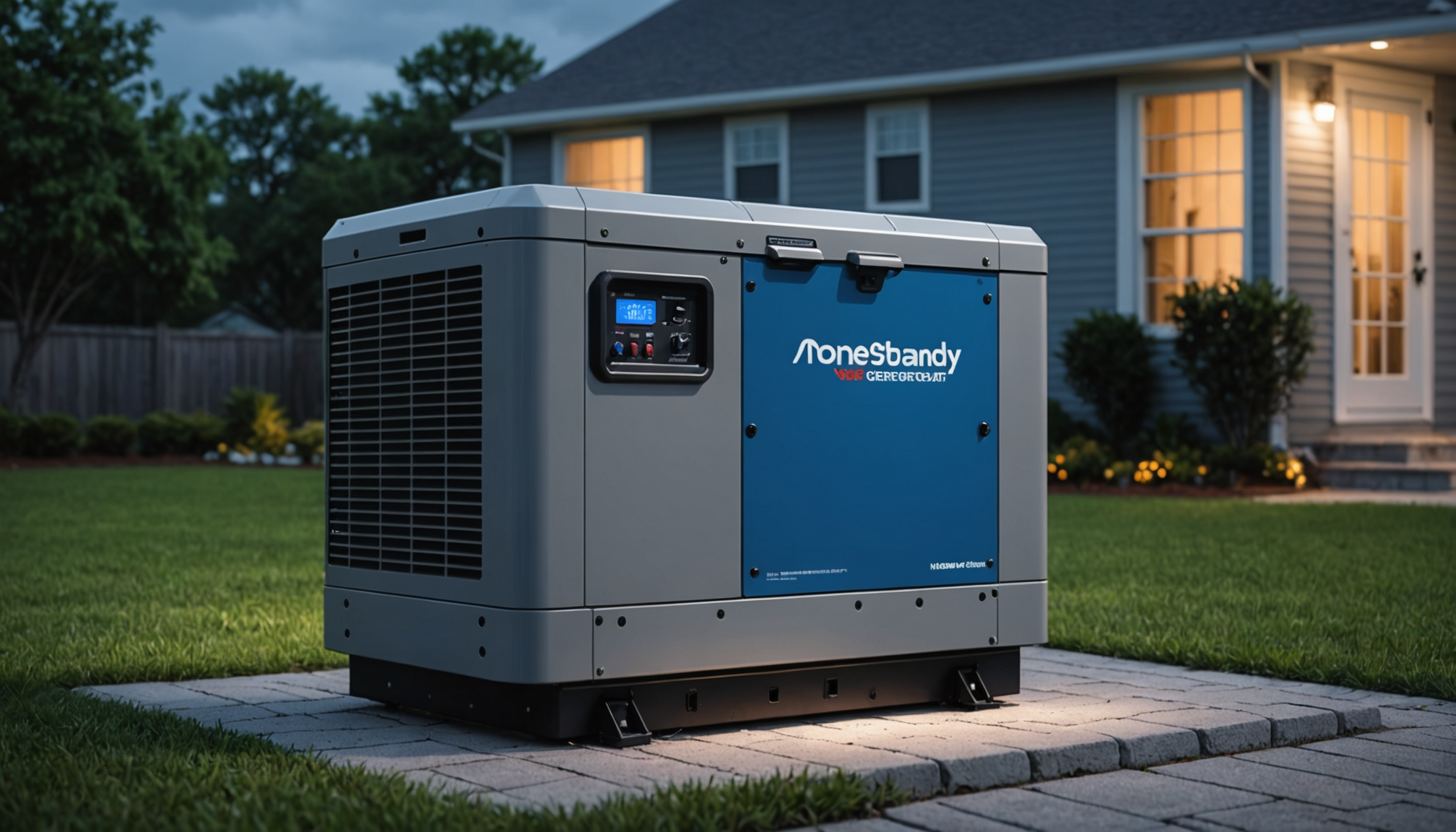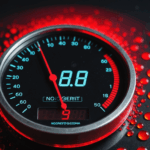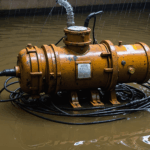Selecting the right generator size for your Tampa home requires careful consideration of your electrical needs during power outages. According to the Electric Power Research Institute, the average American household uses approximately 30 kilowatt-hours (kWh) of electricity per day, but Tampa’s unique climate demands additional power for air conditioning systems during hurricane season.
To accurately size your generator, first calculate your essential power requirements. Make a comprehensive list of critical appliances and their starting and running wattage. Typically, you’ll need to account for:
- Refrigerator: 700-1,200 running watts (2,200 starting)
- Air conditioner (10,000 BTU): 1,500 running watts (2,200 starting)
- Water heater: 3,000-4,500 watts
- Well pump: 1,000-2,100 running watts (2,800 starting)
- Lighting circuits: 200-500 watts
- Essential electronics: 500-1,000 watts
Professional electricians recommend adding 20% to your total calculated load for a safety margin. The Florida Power & Light Company suggests that most Tampa homes require generators ranging from 7,000 to 15,000 watts for essential coverage. Portable generators typically range from 3,000 to 8,500 watts, while standby generators can provide 10,000 to 20,000 watts or more.
When choosing between portable and standby generators, consider fuel type availability. Natural gas standby generators are popular in Tampa due to their reliable fuel supply through existing infrastructure. However, portable gasoline generators remain a cost-effective solution for basic backup power needs. According to the Consumer Product Safety Commission, proper sizing is crucial not only for adequate power supply but also for preventing dangerous generator overload conditions.
For homes with large air conditioning systems or pool pumps, upgrading to a whole-house standby generator might be more practical. The National Electric Manufacturers Association reports that properly sized standby generators can power 100% of an average home’s electrical needs, while portable units typically cover only essential circuits.
Safety protocols and maintenance
Regular maintenance and strict adherence to safety protocols are essential for generator operation in Tampa’s challenging climate. The high humidity and salt air can accelerate component deterioration, making systematic maintenance even more critical. Following manufacturer guidelines, perform monthly generator tests and schedule professional inspections at least twice yearly, particularly before hurricane season begins.
Proper ventilation is paramount for safe generator operation. Always position portable generators at least 20 feet away from your home’s windows, doors, and vents to prevent carbon monoxide poisoning. The electrical connections must remain dry and protected from Tampa’s frequent afternoon thunderstorms. Install carbon monoxide detectors near sleeping areas and ensure they’re battery-backed for additional safety.
Create a comprehensive maintenance schedule that includes regular oil changes, air filter replacements, and fuel system checks. For natural gas or propane standby generators, have a licensed technician inspect fuel line connections annually. Keep detailed maintenance records and always stock essential spare parts, including oil filters, spark plugs, and air filters.
When operating during storms, protect your generator from flooding and excessive moisture. Never run a generator in standing water or during heavy rainfall without proper coverage. If using extension cords, ensure they’re rated for outdoor use and sized appropriately for the electrical load. Check all cords regularly for signs of wear or damage that could create safety hazards.
- Never backfeed power through a wall outlet – this creates lethal risks for utility workers and neighbors
- Store fuel properly in approved containers away from living spaces and maintain fresh fuel supply
- Test your generator monthly under load to ensure reliable operation during emergencies
- Keep a detailed maintenance log and schedule professional servicing before hurricane season
Transfer switch installation options
One of the most critical decisions for Tampa homeowners installing backup power systems is choosing the right transfer switch configuration. Manual transfer switches typically cost less but require physical operation during outages, while automatic transfer switches provide seamless power transition at a higher initial investment.
A common mistake is attempting DIY installation of transfer switches without proper electrical knowledge. This can result in dangerous wiring errors, code violations, and potential damage to both the generator and home electrical system. Always hire a licensed electrician for installation to ensure compliance with Tampa’s electrical codes.
Another frequent error is selecting an undersized transfer switch that doesn’t match the generator’s capacity. The transfer switch must be rated for at least the same amperage as your electrical service panel to prevent overloading and potential fire hazards. For example, if your home has 200-amp service, your transfer switch should be rated accordingly.
Some homeowners mistakenly install transfer switches in inappropriate locations, such as areas prone to flooding or without proper ventilation. The switch should be mounted in a dry, accessible location near your main electrical panel, protected from Tampa’s frequent storms and high humidity.
Many people overlook the importance of service disconnect requirements when installing transfer switches. Florida building codes require a visible means of disconnect for safety during maintenance or emergencies. Failing to include this can result in failed inspections and costly modifications.
Choosing between single-circuit and whole-house transfer switches requires careful consideration. While single-circuit switches are less expensive, they limit flexibility during outages. Some homeowners regret not investing in whole-house switches that allow them to power any circuit as needed, especially during extended power losses common during hurricane season.
A critical error is not properly labeling circuits connected to the transfer switch. Clear identification of which outlets and appliances are on backup power prevents confusion during outages and ensures critical equipment receives priority power. Create detailed documentation of all connected circuits and their respective power requirements.
Finally, many neglect to consider future electrical needs when selecting transfer switch capacity. Plan for potential additions like new air conditioning units or pool equipment by choosing a transfer switch with some extra capacity, typically 20% more than current requirements.
Permit requirements and regulations
Navigating Tampa’s permitting process for generator and transfer switch installations requires careful attention to local regulations and building codes. The Hillsborough County Building Department mandates specific requirements to ensure electrical safety and compliance with Florida state laws.
Before beginning any installation, homeowners must obtain proper permits, which typically require detailed electrical plans showing generator placement, transfer switch location, and fuel line configurations. The City of Tampa’s Construction Services Division requires these plans to be submitted by a licensed electrical contractor, along with load calculations and manufacturer specifications.
Local zoning ordinances dictate minimum setback requirements for permanent generator installations. In Tampa, generators must typically be placed at least five feet from property lines and have adequate clearance from windows and doors for proper ventilation. Noise ordinances also affect placement, with sound levels not exceeding 70 decibels at property boundaries during normal operation.
Key documentation requirements include:
– Electrical installation plans
– Generator specifications and load calculations
– Site plan showing proposed equipment location
– Fuel system documentation (for natural gas or propane)
– Manufacturer’s installation instructions
– Licensed contractor credentials
Special considerations apply in flood-prone areas, where generators and transfer switches must be installed above base flood elevation. The Tampa Bay region’s coastal construction requirements may necessitate additional engineering reviews and wind load calculations for permanent installations.
Fire safety regulations mandate specific clearances from combustible materials and structures. Local fire marshals must inspect permanent generator installations before final approval, ensuring proper fuel line connections and emergency shutoff accessibility.
Insurance providers often require proof of proper permitting and professional installation for coverage validation. Working with licensed contractors familiar with Tampa’s specific requirements can streamline the approval process and ensure compliance with all necessary regulations.
Remember that failing to obtain proper permits can result in significant fines, mandatory system removal, or complications during property sales. Investing time in proper documentation and working with qualified professionals ultimately protects your investment and ensures safe, reliable backup power operation.
Stay proactive by maintaining copies of all permits, inspections, and maintenance records. This documentation proves invaluable during insurance claims or future property transactions. Working within the regulatory framework, while initially seeming complex, provides peace of mind and legal protection for your emergency power investment.
Emergency power planning checklist
- How far in advance should I start preparing my emergency power plan for Tampa’s hurricane season?
- Begin preparations at least 2-3 months before hurricane season starts in June. This allows adequate time for generator installation, electrical upgrades, and obtaining necessary permits while avoiding the rush of last-minute preparations.
- What are the most crucial items to include on my generator power priority list?
- Essential items should include refrigeration, air conditioning, medical equipment, and basic lighting circuits. For Tampa’s climate, prioritizing cooling systems is particularly important, but be sure to calculate total wattage requirements to prevent generator overload.
- How often should I test my backup power system to ensure it’s ready for emergencies?
- Test your generator and transfer switch system monthly, running it under load for at least 30 minutes. In Tampa’s humid climate, regular testing helps prevent fuel system issues and ensures reliable operation when needed most.
- What’s the best way to store fuel for my portable generator in Tampa’s climate?
- Store fuel in approved containers in a well-ventilated, covered area away from living spaces. Due to Florida’s high humidity, add fuel stabilizer to prevent degradation and rotate fuel stock every 3-4 months.
- Should I handle my own generator maintenance, or is professional service required?
- While basic maintenance like oil checks can be done personally, professional service is recommended at least twice yearly. A licensed electrical contractor should perform safety inspections and complex maintenance, especially for systems with automatic transfer switches.











